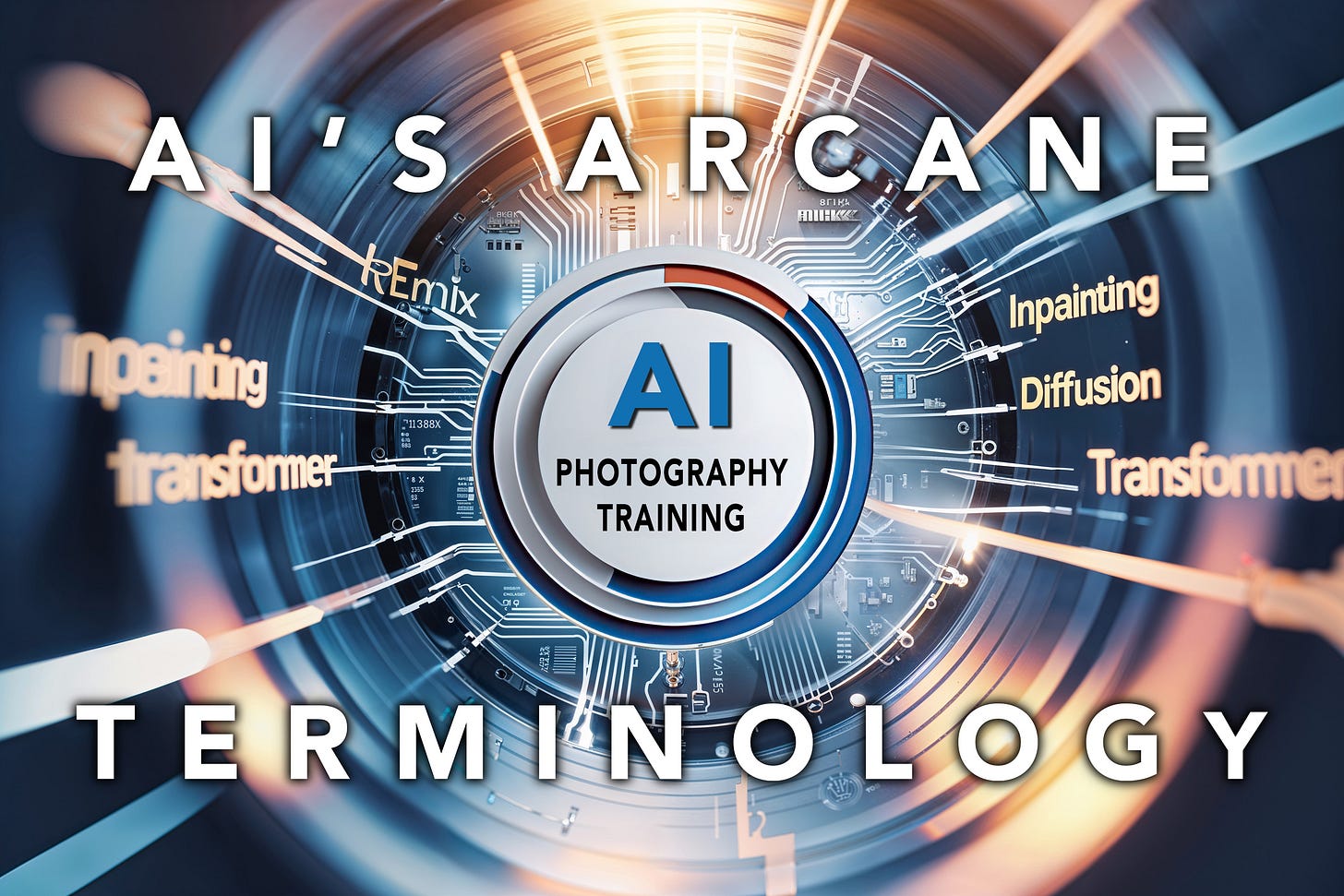Why Photographers Should Care About AI Arcane Terminology
How understanding AI terms can make your photography workflow more predictable.
Some of the terms used in AI image-making can feel technical, and even unnecessary, particularly to photographers and other artists. Words like diffusion models, neural networks, inpainting, and rectified flow transformer sound more at home in a computer science lab than a photographer’s workflow.
So, I thought I’d use this week’s article to explain why we occasionally produce articles about these seemingly eye-glazing terms in our “AI Photography Training” Substack.
It’s not because we want to turn photographers into engineers. It’s because we have found that having a little context makes your work with these tools less frustrating and more predictable. That was one of the founding ideas behind AI Photography Training: to help photographers stay creative, practical, and informed while everything around us in AI evolves at high speed.
Four Reasons Why This Matters for Photographers
Choosing the Right Tool for the Job
Knowing the difference between AI models and the technology they use isn’t trivia. It’s what helps you decide whether to reach for Midjourney when you want something painterly, Gemini when you need faithful edits, or Flux.1 Kontext when you want precise, instruction-based refinements.
Setting Realistic Expectations
A lot of frustration comes from expecting results that a platform simply isn’t built to deliver. A little background knowledge helps set the right mindset before you even start uploading reference images, prompting, or editing.
Explaining Results to Clients and Colleagues
When you can explain why one image looks stylized and another feels more natural, you’re not just showing work, you’re guiding the process and building credibility.
Future-Proofing Knowledge
This field is moving fast. By understanding a few of the “arcane” terms today, you’ll be ready to make sense of tomorrow’s new features without feeling left behind.
Bringing It Back to the Practice of Photography
A quick reminder: definition articles like we’re discussing here aren’t the majority of what we do. Most of our articles cover practical examples, step-by-step guides, tutorials, mini-courses, news, and even the legal side of AI and photography. However, we do believe that occasional explanations of terminology are important. They give you the background to understand why tools behave as they do, which in turn makes your creative work more predictable and ultimately, more satisfying.
So no, you don’t need to be a computer scientist to succeed with AI photography tools. But understanding a bit of the language may help you work smarter, just as learning about f-stops, RAW files, or histograms once did.
What seemed “arcane” back then became second nature. The same can be true now. These concepts can help you make the most of your creative toolkit.
You can also download our 2025 Edition of the AI Glossary for Photographers, a reference guide that summarizes over 50 AI-related terms photographers need to know.


